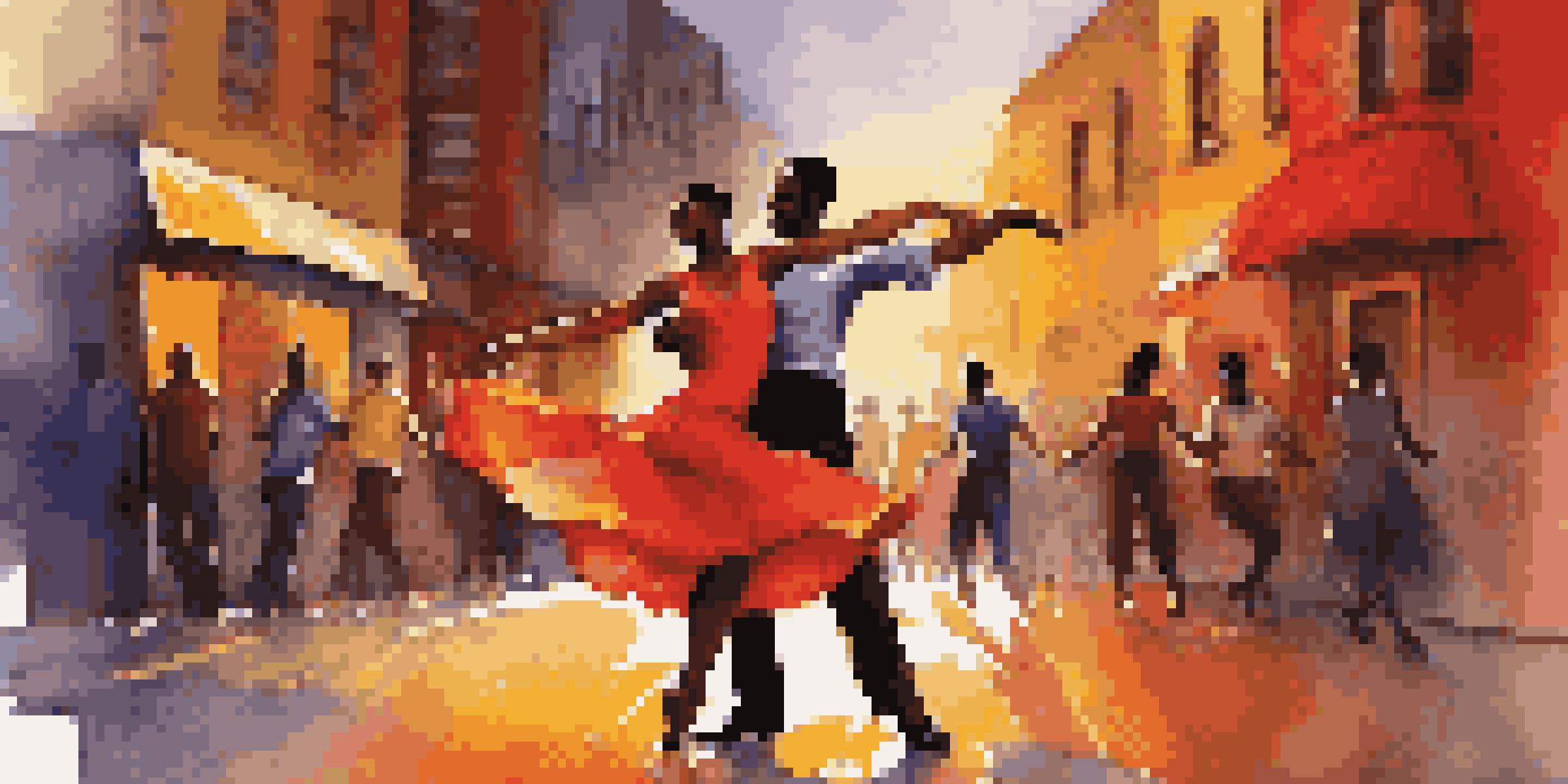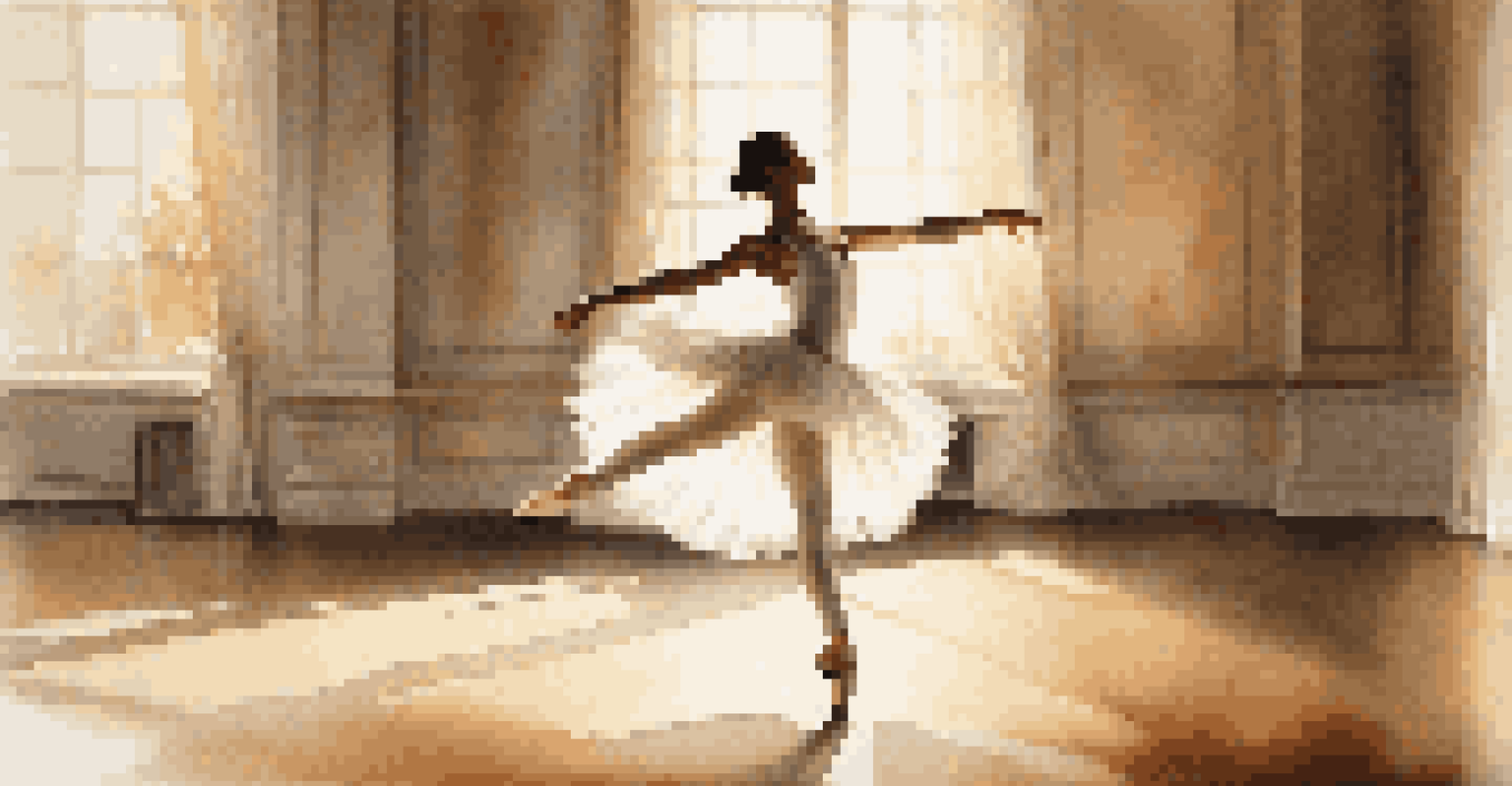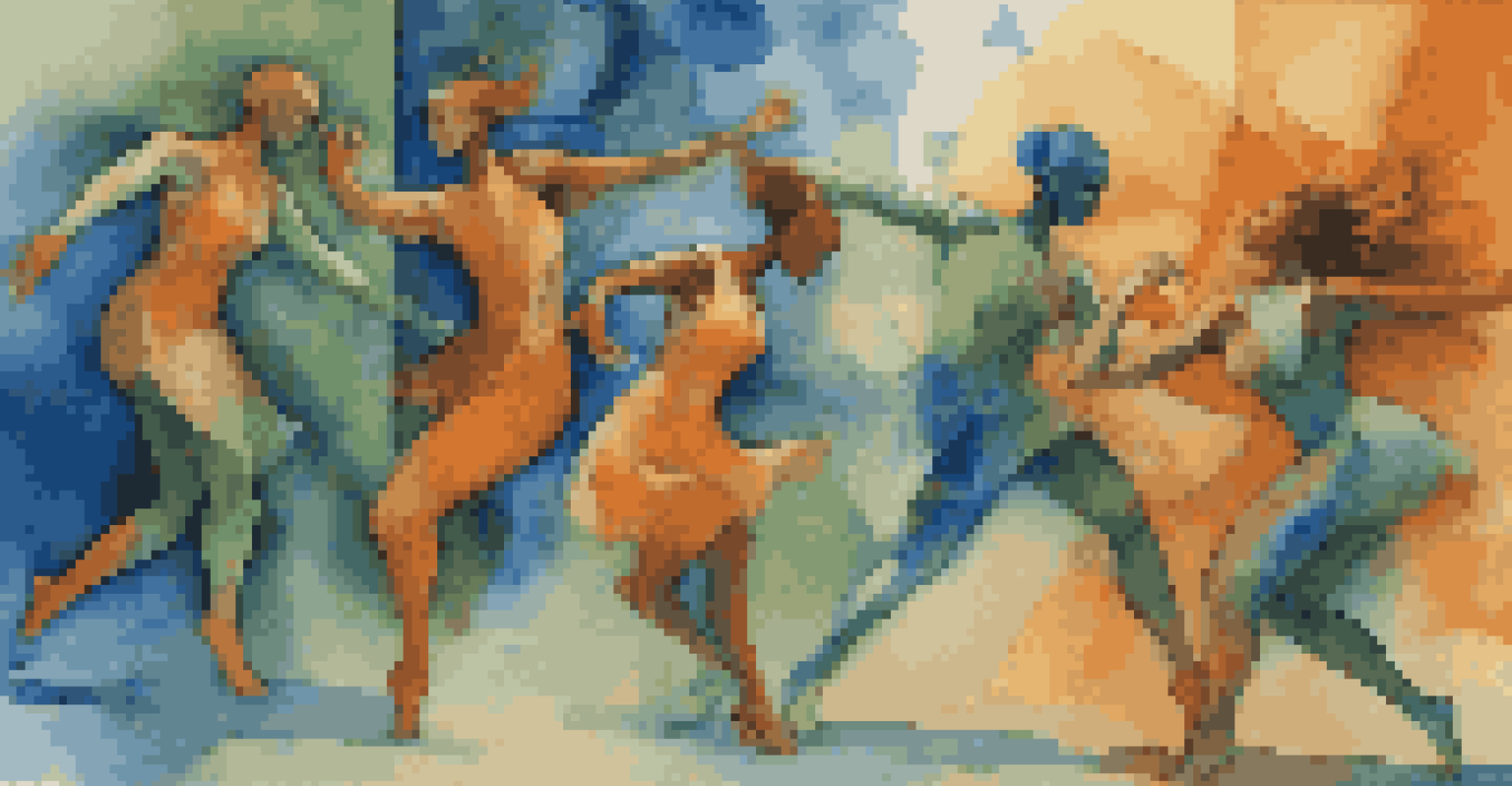Understanding Dance Styles: The Role of Rhythm and Melody

The Foundation: Rhythm in Dance Styles
Rhythm is the heartbeat of any dance style, providing structure and pace. It's what makes us tap our feet or sway our bodies instinctively. In styles like salsa, for instance, the rhythm dictates not only the timing of steps but also the energy of the dance, creating a lively atmosphere that invites participation.
Dance is the hidden language of the soul.
Without rhythm, dance would lose its essence, and movement would feel directionless. Think of it like the pulse of a song; if the beat is off, everything feels out of sync. This is why dancers often spend countless hours practicing to internalize the rhythm, ensuring their movements align perfectly with the music.
Moreover, different dance styles have unique rhythms that reflect their cultural backgrounds. For instance, the quick beats of tap dancing contrast sharply with the flowing rhythms of ballet, showcasing how rhythm serves as a signature for each style. Understanding this foundation helps dancers express themselves authentically.
Melody: The Soul of Dance Expression
While rhythm sets the pace, melody adds depth and emotion to dance. It’s the melodic lines that can evoke feelings of joy, sadness, or nostalgia, allowing dancers to convey stories through movement. In contemporary dance, for example, dancers often interpret the melody in ways that highlight their personal experiences, making each performance uniquely theirs.

Melody also influences the choice of movements and styles. A slow, lyrical melody might inspire graceful, fluid movements in ballet, while an upbeat pop tune could lead to energetic, sharp movements in hip-hop. This interplay between melody and movement not only engages the audience but also enhances the overall aesthetic of the performance.
When dancers connect with the melody, they elevate their performance, transforming it into an emotional journey. Just as a painter uses colors to convey a mood, dancers use melody to paint a picture with their bodies. This connection is what makes dance not just a series of steps but a true art form.
Cultural Influences on Rhythm and Melody
Dance styles are deeply rooted in their cultural origins, which shape both their rhythms and melodies. For instance, traditional African dance is often characterized by complex rhythms that are closely tied to drumming patterns, while Indian classical dance incorporates intricate footwork synchronized with melodic vocal music. This cultural context enriches the dance experience, providing layers of meaning and significance.
Rhythm is something you either have or don’t have, but when you have it, you have it all over.
Furthermore, as cultures interact and blend, so do their dance styles and musical influences. For example, the fusion of Latin rhythms with jazz elements has given rise to vibrant dance styles like mambo and cha-cha, showcasing how rhythm and melody evolve over time. This cultural exchange not only keeps dance vibrant but also fosters a sense of community among dancers from diverse backgrounds.
Understanding the cultural roots of rhythm and melody can enhance a dancer’s appreciation for their craft. By recognizing how different influences shape their movements, dancers can find inspiration in the rich tapestry of global dance traditions, ultimately creating performances that resonate on multiple levels.
The Role of Rhythm in Partner Dances
In partner dances, rhythm plays a crucial role in ensuring harmony between dancers. Whether it's the close connection in ballroom dancing or the playful interactions in swing, both partners must be attuned to the same rhythm. This synchronization allows them to execute complex patterns and lifts seamlessly, creating a visually captivating experience.
Consider the tango, where the rhythmic emphasis on certain beats not only guides the dancers' footwork but also enhances the emotional intensity of the dance. The subtle shifts in rhythm can dictate whether the dance feels passionate or playful, showcasing how essential rhythm is in communicating the desired mood between partners.
Moreover, the ability to listen to and adapt to each other's rhythm strengthens the connection between dancers. This partnership dynamic is akin to a conversation; just as one person adjusts their tone based on the other’s response, dancers must be responsive to their partner’s movements. It’s this interplay that brings partner dances to life.
Melody's Influence on Solo Dance Styles
In solo dance styles, melody serves as a guiding force that inspires individual expression. Dancers can interpret melodies in a personal way, allowing them to showcase their unique styles and emotions. For instance, a dancer might choose to perform a contemporary piece that resonates with a particular melody, using their body to tell a story that reflects their own experiences.
This personal connection to melody not only enhances the performance but also captivates the audience. When a dancer feels the music deeply, it transforms their movements into an expressive dialogue that resonates with viewers. The audience can often feel the emotion behind each step, creating a powerful connection that transcends words.
Additionally, the choice of music can define the style of the dance. A dancer performing to a whimsical melody might incorporate playful, light-hearted movements, while a dramatic score could lead to more intense, powerful expressions. This versatility is what makes solo dance a rich and diverse art form, with each performance offering a new perspective.
The Interplay of Rhythm and Melody
Rhythm and melody work hand in hand, creating a dynamic interplay that shapes the overall experience of dance. While rhythm provides the structure, melody adds emotional layers, allowing dancers to express a wide range of feelings and narratives. This relationship is fundamental; one enhances the other, creating a rich tapestry of movement and sound.
In many dance styles, you’ll notice how dancers instinctively adapt their movements to complement both the rhythm and the melody. This might mean accentuating certain beats with sharp movements or flowing gracefully during melodic breaks. It’s this balance that keeps the audience engaged, as they become immersed in the dance’s storyline.
Moreover, choreographers often craft pieces that highlight this interplay. By designing movements that reflect both rhythm and melody, they create performances that are not only visually stunning but also emotionally resonant. This synergy is what transforms a simple dance into a captivating performance that lingers in the minds of viewers long after the music stops.
The Evolution of Dance Through Rhythm and Melody
Dance styles are not static; they evolve over time, influenced by changes in rhythm and melody. Historical events, cultural shifts, and technological advancements all play a role in shaping dance forms. For example, the rise of electronic music has led to the emergence of new dance styles, blending traditional rhythms with modern beats.
As artists experiment with different sounds and rhythms, they push the boundaries of what dance can be. This evolution allows for greater creativity and expression, enabling dancers to explore new movement possibilities. Styles that once seemed unrelated can merge and create something entirely fresh, showcasing the limitless nature of dance.

Ultimately, this evolution reflects the society in which it exists, capturing the essence of contemporary culture. Dance becomes a mirror, reflecting not only the musical trends of the time but also the emotions and stories of the people. By understanding this evolution, dancers can appreciate their craft as part of a larger narrative, connecting them to generations of artists before them.